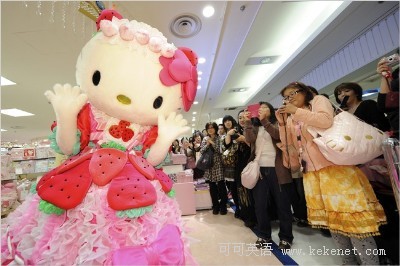
TOKYO — At age 36, Hello Kitty may be running out of product lives.
东京——今年已经36岁的HelloKitty很可能将寿终正寝。
That is the fear of executives at the Sanrio Corporation, the Japanese company that created the cute, cartoonish white cat in 1974, and groomed her into a global marketing phenomenon worth $5 billion a year.
这正是Sanrio公司的执行官们所担心的问题。这家日本公司于1974年创造了这个卡通猫,自面世以来,这个可爱的小白猫创造的巨额收益约合一年50亿美元。
In Japan and around the world, Hello Kitty has been licensed over the years for products that include dolls, clothes, lunch boxes, stationery, kitchenware, a Macy’s parade balloon and even an Airbus owned by Taiwanese airline EVA Airways. But amid signs that Hello Kitty’s pop-culture appeal is waning, especially at home, where sales have shrunk for a decade, the company has struggled to find its next-generation version of adorable.
多年来,Hello Kitty的授权产品涉及公仔、服装、饭盒、文具、厨具,还进入了纽约感恩节盛大游行,甚至台湾长荣航空的一辆空客上也有HelloKitty。但是Hello Kitty的受欢迎程度已经出现了下降的迹象,特别是在日本本土,10年来销量下降,使得公司必须着力于寻找新的流行卡通形象。
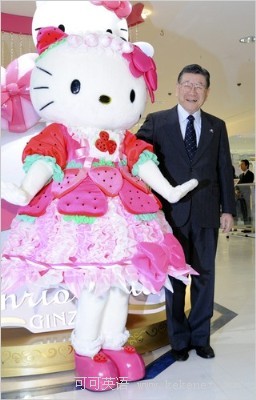
Sanrio’s recent flops include Spottie Dottie, a pink-frocked Dalmatian, and Pandapple, a baby panda. Even the moderately successful My Melody (a rabbit) and TuxedoSam (penguin) show no signs of achieving global Kitty-ness.
除了Hello Kitty,Sanrio公司的SpottieDottie(一只穿着粉色外套的斑点狗)和Pandapple(苹果熊,一只小熊猫)这两种产品的市场反响也非常不好。即便是相对来讲比较受欢迎的MyMelody(一只兔子)和TuxedoSam(一只小企鹅),也很难企及Hello Kitty曾经的轰动市场效应。
“We badly need something else,” said Yuko Yamaguchi, who has been Sanrio’s top Hello Kitty designer for most of its 36 years. “Characters take a long time to develop and introduce to different markets,” Ms. Yamaguchi said. “But Kitty has been so popular it’s overshadowed all our other efforts.”
“我们真的需要一些新东西了,”Sanrio的首席Hello Kitty设计师山口裕子(Yuko Yamaguchi)说,“一个卡通形象从面世到渐渐被不同市场接受要经历很长的过程,但是HelloKitty太红了,都影响到了我们其他卡通形象的推广了。”
One of Sanrio’s latest efforts is Jewelpet, a group of 33 sparkly eyed animals each with its own look. Diamond the black kitten is ladylike and decks out in pink bows. Sapphire is cool and prefers to wear blue. Sanrio’s thinking is that with so many to choose from, one has to stick.
Sanrio新近推出过一种叫宝石宠物(Jewelpet)的卡通形象,这一组动物一共有33个,眼睛闪亮,形象各异。比如叫“钻石”的是一只黑猫,戴粉色蝴蝶结,扮成女孩的形象。叫“蓝宝石”则很爱扮酷,喜欢穿蓝色衣服。Sanrio考虑有这么一组庞大的卡通形象,各类人总能在当中找到自己喜欢的。

A Sanrio savior would arrive not a moment too soon.
但是Sanrio的救世主却不会这么快就诞生的。
In a closely watched ranking of Japan’s most popular characters, compiled each year using sales data by the Tokyo-based research firm Character Databank, Hello Kitty lost her long-held spot as Japan’s top-grossing character in 2002 and has never recovered.
在由东京的调查公司Character Databank完成的权威市场调查中,Hello Kitty自从2002年从日本最畅销卡通形象的宝座上下来之后,就再也没有重返巅峰过了。
In the latest survey, released this month, Kitty ranked a distant third, behind the leader, Anpanman, a character that is based on a Japanese jam-filled pastry and is produced by Nippon Television. The second spot is still held by the venerable game and animation brand Pokémon, owned by Nintendo.
本月公布的最新调查结果显示,Hello Kitty仅排名第三,被前两名远远甩下。排名第一的是面包超人,由日本电视台推出,面包超人的形象是由日本的一种果酱面团而来。排第二的则是任天堂出品的经久不衰的游戏动画人物皮卡丘。
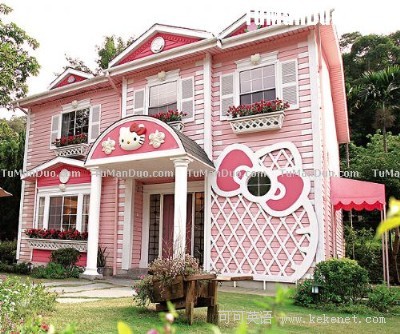
Sanrio is also being usurped by smaller, nimbler rivals. The formerly little-known stationery maker San-X has scored two huge hits in Japan with its panda character, Tarepanda, and its bear, Rilakkuma — which has charged up the Character Databank charts, ranking fifth in the latest survey.
而且Sanrio还面对着来自小公司的竞争。San-X之前只是个默默无名的文具生产商,但是最近他们推出的两个新卡通形象大受追捧,这便是趴趴熊(Tarepanda)和轻松小熊(Rilakkuma),其中轻松小熊在CharacterDatabank公布的调查中名列最受欢迎卡通形象第五位。
“The character business is basically a wide-open field,” Hikaru Takayama, chief executive of Fanworks, an animation and character consultancy here, said at a recent convention of the Tokyo Contents Market. “It all comes down to management.”
日本角色设定工作室(Fanworks)是一个制作并提供咨询意见的卡通形象公司,其首席执行官高山光(Hikaru Takayama)在东京Contents Market最近的一次会议上说:“卡通人物市场其实是一个非常开放的领域,它的成功与否归根结底取决于如何管理。”
“Going forward, perhaps smaller companies will be quicker to come out with new ideas,” Mr. Takayama said. “Characters can develop into manga, anime, potentially a big business,” he said, referring to the popular Japanese comic book and animation art forms.
“这样的话,也许小规模的企业能更快的酝酿出新的点子,”高山先生以日本风靡的漫画书和动画产业为例,说,“卡通形象可以通过漫画、动画来塑造,这是一个存在着巨大潜力的市场。”

Sanrio’s sales, which come from products as well as licensing, have reflected Kitty’s fading fortunes, shrinking for 10 consecutive years since 1999. The company’s overall sales in Japan fell 3.3 percent in the 12 months ending in March, Sanrio announced Friday, as both licensing and sales of good slumped. Hello Kitty fatigue is hitting Japan first, and hard, the company indicated.
自1999年以来,Sanrio公司通过Hello Kitty的获利就一直在减少,包括直接的产品销售,也包括公司授权的衍生商品。上周五Sanrio通报,在截止到3月的过去12个月里,公司在日本的总销售额下降了3.3个百分点,也是包括直接的产品销售和授权商品获利,都大幅缩水。公司称,Hello Kitty首先在日本出现了市场疲软,而且是严重的疲软。
But a one-time 28 percent jump in overseas sales — which Sanrio attributed to an accounting change, as well as several big contracts overseas tied to Hello Kitty’s 35th birthday celebrations — helped the company swing back to a net profit of 4.37 billion yen, in contrast to a loss of 1.50 billion yen the previous year.
不过,Hello Kitty的海外销售额却一度跃增了28%,使得Sanrio公司去年的净利润达到了43.7亿日元,远好过前年的15亿日元的年度赤字。Sanrio公司认为,海外市场收益的暴增,主要原因有二,一是因为公司会计变更,二是因为去年是HelloKitty的35岁生日,这一庆典为公司赢得了很多海外的合同。
Sanrio now relies on overseas sales for 30 percent of its revenue, the company’s executive director, Susumu Emori, said Friday. But Mr. Emori was cautious about Sanrio’s future overseas prospects. “The last quarter was extraordinary, and we expect both sales and profit to fall this year,” he said.
执行部主任江守进(Susumu Emori)上周五指出,Sanrio现在有三成的收入要依靠海外市场,但是江守对Sanrio未来的海外市场前景表示担忧。“过去一个季度的情况非常特殊,而我们预计今年的销售额和利润都会下降。”他说。

Analysts say part of the problem is that Sanrio has oversold Hello Kitty, which appears on products as various as T-shirts, toilet paper and toasters. Sanrio was recently forced to write off the 500 million yen in debt held by Harmony Land, one of its two character theme parks in Japan, after a falloff in visitors, although the park remains open.
分析家认为,导致目前困难局面的原因之一就是Sanrio对Hello Kitty的“过度开发”,像是T恤、厕纸乃至多士炉等产品都屡见不鲜。Sanrio公司最近被迫要消除Hello Kitty和谐乐园的5亿日元的债务,尽管依旧保持公园开放。和谐乐园是日本最大的两个卡通主题乐园之一,但近来游客量已经减少。
“Sanrio was initially very careful in making sure the Hello Kitty phenomenon didn’t get out of hand,” said Naohiro Shichijo, an associate professor in creative industries at the Waseda Institute for Advanced Studies in Tokyo. “That’s the unspoken rule of the character business: you can’t let a character get too wildly popular all at once,” he said. “You want to go for longevity.”
早稻田高级研究所的副教授七丈直弘(NaohiroShichijo)一直从事创造性产业的研究,他指出:“Sanrio一开始非常谨慎,以确保Hello Kitty的市场效应在自己控制范围内。这也是卡通行业的一种潜规则:要想一种卡通形象长盛不衰,就不能让它一下子太过大红大紫。”

Hello Kitty, introduced on a vinyl coin purse in 1974, became an instant phenomenon in Japan, and sales at Sanrio grew sevenfold in the cat’s first three years. But even then Sanrio’s founder and president, Shintaro Tsuji, expressed nervousness that consumers would burn out on the brand. Sanrio’s sales tapered off in the late 1970s, and then again in the mid-1990s when Japan entered a long economic slump.
1974年,Hello Kitty的形象最初出现在塑料钱包上,转瞬之间就风靡全日本。面世的头三年,Sanrio公司的销售额增加了7倍。Sanrio的创始人兼主席辻信太郎(Shintaro Tsuji)当时就很担心,怕消费者的热情来也快去也快。70年代末,Sanrio的销售额曾一度跌至低谷,而到了日本经济衰退的90年代中期,其销售额又再次下滑。
But around 2000, Kitty surprised Sanrio by rebounding in a big way, with Hollywood stars wearing the cat on T-shirts and carrying Hello Kitty bags.
但在2000年左右,Hello Kitty又出现了令Sanrio都感到意外的强势反弹,当时好莱坞的明星也穿着Hello Kitty的T恤,用印着Hello Kitty的包。
“But when you have a boom, you have a bust,” said Mr. Shichijo, the professor. “People get sick of it. Now Sanrio’s in trouble.”
“但是,正所谓盛极必衰,”七丈教授说,“人们总会厌倦它的。现在的Sanrio就很困难了。”
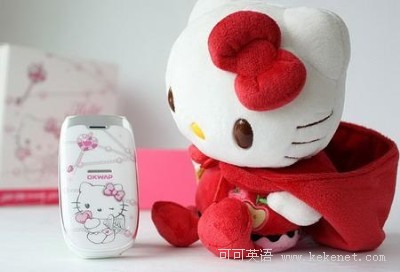
Sanrio has tried to keep Hello Kitty up to the times: sensing a move away from Japan’s love affair with the cute, or “kawaii” aesthetic, it has pushed an edgier look for the cat in the last three years, using as much black as pink.
Sanrio也尝试过让Hello Kitty跟上时代潮流,比如说,在过去三年里,Sanrio在设计时已经减少了一些日本人所偏爱的“卡哇伊”的成分,多用黑色,就像以往使用粉色一样频繁,这样就使得Kitty猫的形象更加出位。
Still, a sense of crisis is evident at the Tokyo offices of Sanrio, where 30 designers, led by Ms. Yamaguchi, are charged with developing new characters. At periodic product meetings, each designer presents as many as 20 characters for consideration by Ms. Yamaguchi. Of those, perhaps a dozen are chosen for trial sales at a pilot Sanrio store in Tokyo.
但是Sanrio的东京办公处仍然弥漫着危机四伏的气息。以山口为首的30人的设计团队,正在努力开发新的卡通形象。在例会上,每个设计师都会提交多达20个卡通形象,供山口筛选。这当中可能会选出12个,在Sanrio位于东京的试点商店进行销售,测试市场反应。
These days, designers are also urged to make sure their characters work across multiple media — a lesson Sanrio learned the hard way with Hello Kitty. Because Kitty had no mouth, it was difficult for the cat to break into television animation, depriving Sanrio of a lucrative source of revenue.
Sanrio还要求设计者们构思新形象时,能够确保新形象可以通过多种媒体进行推广——这是Sanrio在Hello Kitty身上吸取的教训。Kitty猫没有嘴巴,不能说话,也就与电视动画无缘,从而断了Sanrio公司的一条重要财路

When the company created a talking Kitty for a pilot cartoon series, it set off a fury among fans loyal to the cat’s mouthless look, Ms. Yamaguchi said.
Sanrio公司当年也试过让Kitty猫说话,并搬上了电视,据山口说,这一举动引发了广大Kitty粉丝的不满,因为他们已经接受了没有嘴巴的Kitty的形象了。
And though Sanrio goes to great length to create back stories for its characters — Kitty, for example, was born in London and likes to eat cookies — that biography is not compelling enough to draw many fans, according to analysts, who cite weak characterization as a drawback in Sanrio’s product lines.
尽管Sanrio也绞尽脑汁为卡通人物编了一系列背景故事,比如说,他们为Kitty猫定位的是一只生于伦敦、爱吃曲奇饼的猫,但是这些故事并不精彩,也没有如愿拉来大批粉丝。分析家认为,卡通形象塑造缺乏个性,是Sanrio生产商品时的缺点之一。
Characters developed by Walt Disney, in contrast, typically make their debuts in blockbuster movies that propel them to fame and provide a springboard for further storytelling. The hit Disney animated film “Lilo & Stitch,” for example, which featured a Hawaiian girl and an alien friend, made a successful transition to a television series, all the while bringing merchandising and licensing income to Disney.
与此形成鲜明对比的是沃尔特·迪斯尼塑造的卡通形象。迪斯尼的卡通人物都是通过大片和观众见面,形成轰动效应,这之后再发展后续剧情。著名电影《星际宝贝》就是个很好的例子。电影讲述了一个夏威夷的女孩和她的外星人朋友的故事,这个故事后来成功的排成电视动画剧集,并且迪斯尼通过授权其他衍生商品,获取了巨额利润。
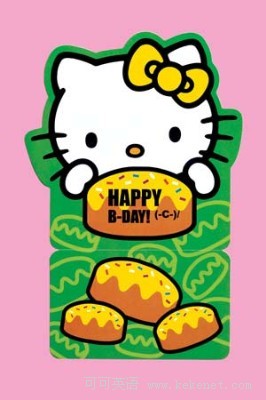
In fact, “Lilo & Stitch” has been so popular even in Japan that the series has been localized — with a Japanese girl named Yuna in place of Lilo and Okinawa replacing the Hawaiian setting.
而且《星际宝贝》在日本也取得了巨大成功,甚至在日本播出的动画剧集把主人公换成了日本女孩尤娜(Yuna),故事背景也换成了冲绳,以迎合本土观众。
Sanrio’s designers are also told to aim their new characters at children in elementary school or younger — even if much of the marketing, especially in Japan, will be aimed at older consumers. When younger children embrace a character, many tend to remain fans even later in life, said Miyuki Okumura, the lead designer behind the Jewelpet series. “If a character captures the heart of a little girl, she’s going to love that character into her teens, at least,” Ms. Okumura said. “Then when she has children, she’ll again buy that character for them,” she said. “That’s what we’re aiming for.”
Sanrio要求设计师们将受众集中在小学生甚至更低龄儿童身上——尽管日本的主要消费群体比他们要年长。宝石宠物系列的首席设计师奥村美雪(Miyuki Orumura)认为,年幼的孩子如果喜欢某个卡通形象,以后也会一直喜欢下去。“如果一个人小女孩的时候喜欢上某个卡通形象,她至少直到少女时代也会对这个形象厚爱有加的。”奥村说道,“等她有了孩子,她还会给自己的孩子买同样的卡通产品,而这正是我们所希望的。”












